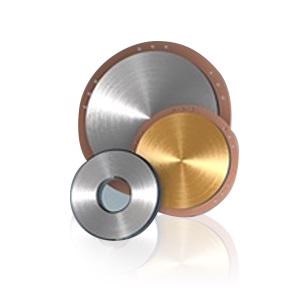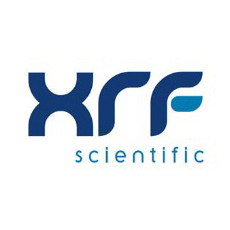Platinum (Pt) ribbons, sheets, and foils are important intermediary goods utilized to create a varied range of end-products. Even though this material is difficult to find, it has been utilized in a wide range of scientific equipment manufacturing for around two centuries.
Crucibles created from pure platinum and a wide range of platinum alloys to function at high temperatures have become important components in global chemical research facilities.
The platinum products are fundamental for use in some of the highest sensitivity processing applications around the world, including x-ray fluorescence (XRF) and inductively-coupled plasma (ICP) analysis.
Platinum products that are semi-finished have advanced product manufacturing capabilities, because of the excellent mechanical features of platinum and its compatibility with a wide range of alloying elements. This article details the characteristics of different types of semi-finished platinum products, and outlines the possible applications for these novel intermediate products.

Types of Semi-Finished Platinum Products
Pure platinum (>99%) is particularly malleable and ductile, with a high density and a low reactivity with contaminant elements. This creates excellent resistance to corrosion even in higher temperatures, up to the melting point of 1770 °C.
These factors put together create excellent biocompatibility and electroconductivity making a wide range of platinum products useful in the manufacture of medical devices. For example, wires and foils made from platinum of a high purity are most often utilized in the manufacture of medical implants such as pacemakers and catheters.
The comparatively brittle quality of platinum can be reduced by alloying the mineral with iridium (Ir) at ratios of around 70:30 (Pt:Ir). This method can be utilized to extend the Vickers hardness of platinum products by up to 100 times, which means it is an appropriate alloy for medical dishes and components of surgery. Platinum foils and iridium sheets are not used often when manufacturing medical discs as the material is very expensive.
The rare electrochemistry of products made from pure platinum has also been widely shown in the electronics industry. They have been important in the development of thin and thick film architectures, and many platinum alloys have been utilized to manufacture the hardware of computers, and touch screens on modern smartphones.
Platinum ribbons are widely utilized for electrical contacting solutions, whereas pure platinum foils can be used in many forms of electronic R&D. Foils and sheets are more fragile in comparison and have been utilized in delicate applications. Platinum sheets tend to be used in robust sectors for example industrial-scale thermal processing.
Foils rolled into sheets of <0.01 inch have been extensively adopted into the glass-making industry where it is used in the manufacture of synthetic glass fibers for optical solutions and polymer creation.
Semi-Finished Platinum Products for Thin Film Deposition Techniques
XRF Scientific has been creating precision sample preparation equipment for the use in x-ray fluorescence (XRF) and inductively-coupled plasma (ICP) analysis since 1972. Their products and methods have helped experts in a wide range of industrial sectors, giving precise composition and measurements of purity in sample materials for the mining, construction, petrochemical sectors, and more.
The success that XRF Scientific has experienced has allowed them to widen their expertise in the market, providing a wider product range in platinum products for solutions beyond sample analysis.
Semi-finished platinum products from XRF Scientific has found wide-ranging applications in the expanding sector of thin film deposition. Evaporation and chemical vapor deposition (CVD) is one of the most regularly used thin film coating methods. They can be used to create rare microelectronic structures and to change the surface composition of a device and to enhance its functionality.
Semi-Finished Precision Platinum Products
Precision platinum materials are light and rare metals that have been reduced from ingots and created into a wide range of new shapes. This wide range of products entails foils, sheets, thermocouple wires, platinum slugs, and can be utilized in a wide range of applications.
As an example, platinum starter sources, are most often used to enhance the product yield of thin film deposition methods for functional medical device coatings.
Platinum Products for Thin Film Deposition
Traditional evaporation methods feed slugs, or pellets, into an electron beam in a high vacuum environment. This process being of a high pressure allows substrate to be coated with particles, reducing the chances of contamination from other vapors.
Platinum evaporation slugs are readily available in customized sizes for a varied range of film thickness. The consistency of each film is highly important as even minute surface variances can reduce the efficiency of a thin film end-product.
Further platinum products can be utilized to enhance the regularity of evaporation procedures and increase the yield of deposition. The materials reduce random evaporation because of slug topography variances, thus eliminating the need for the adjustment of electron beams and increasing the efficiency of vaporization. XRF Scientific provides platinum starter sources at volumes ranging from 5 cc – 155 cc.
High-power impulse magnetron sputtering (HIPIMS) utilizes small magnetron pulses and lower heat environments to physically put vapors onto substrate materials with excellent physio chemical bonds. Sputter coating is beneficial as its target materials and formulations for coating most often showcase similar compositions for higher durability of the thin film.
These targets are often created from platinum products which can be bonded, or non-bonded, in the context of the application. Fixed platinum targets can allow for the fixation to vacuum units meaning that the stability of the target material during the HIPIMS process is enhanced.
The platinum products for HIPIMS applications can be utilized for high target magnetron sputtering, ion beam sputtering, reactive sputtering, and PVD sputtering.

This information has been sourced, reviewed and adapted from materials provided by XRF Scientific.
For more information on this source, please visit XRF Scientific.